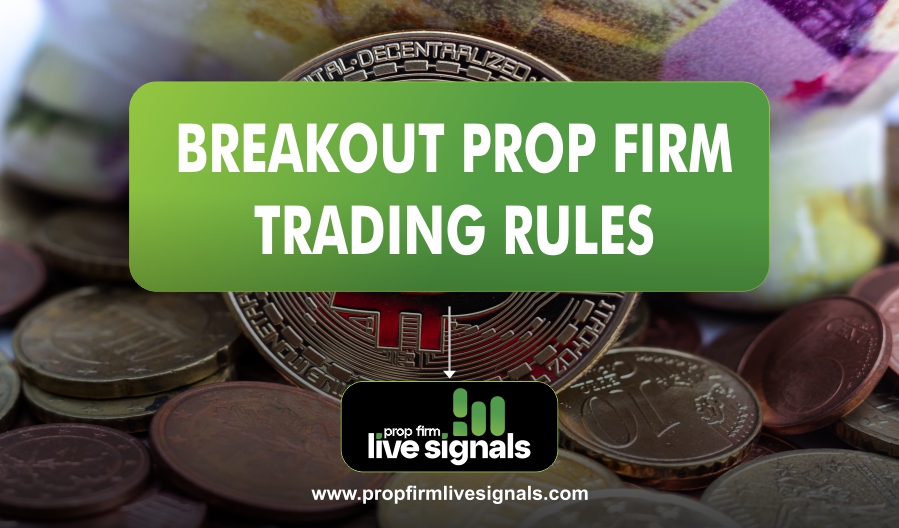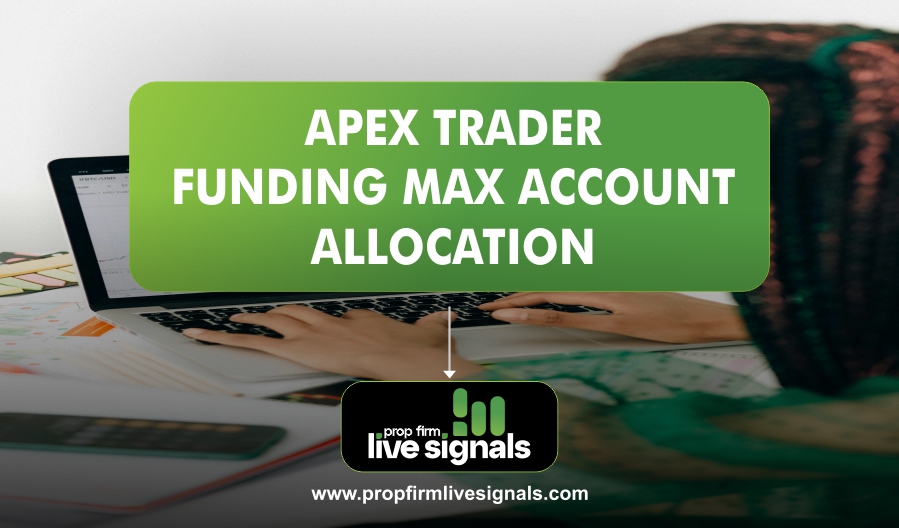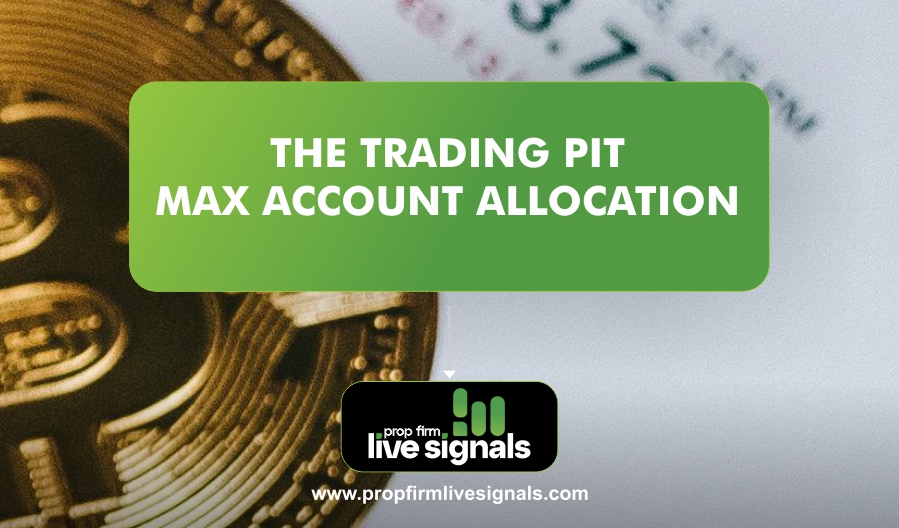Breakout trading, which targets price movements after breaking support or resistance, is popular in prop firms. Its success depends on precise execution and a clear understanding of firm rules, including risk management and leverage limits.
In prop trading, following breakout rules is vital. It’s not just about spotting breakouts but adhering to risk guidelines, timing entries, and maintaining consistency for long-term success.
What is a Prop Firm?
A proprietary trading firm (prop firm) uses its own capital to trade in financial markets. It allows traders to trade with the firm’s money, typically in exchange for a share of the profits.
Prop firms provide infrastructure, capital, and tools for traders to operate, with traders sharing a portion of their profits. The advantage is that traders can make larger returns with significant capital without risking their own funds.
What is Breakout Trading?
Breakout trading is a strategy used by traders to capitalize on market movements when the price of an asset breaks out of a defined range, level, or chart pattern. This often signals a strong potential for continued price movement in a specific direction. Traders will enter a position when the price breaks above a resistance level or below a support level, anticipating that the price will continue in the direction of the breakout.
Breakout trading can occur in any time frame and can be applied to various financial instruments, including stocks, forex, commodities, and cryptocurrencies. The goal of breakout trading is to identify these critical levels ahead of time and enter trades just before a large price movement occurs.
Importance of Breakout Strategies in Prop Trading
For prop traders, breakout strategies are popular because they have the potential for substantial returns. Prop firms look for traders who can identify high-probability breakout opportunities, manage risk, and execute trades effectively. Because breakout trades tend to yield strong and quick moves in price, they can be very profitable in a short time frame.
However, with great potential comes great risk, and thus, prop firms require strict adherence to trading rules and risk management protocols. Successful breakout traders need to understand how to enter and exit trades strategically while adhering to these rules.
Understanding Breakout Prop Firm Trading Rules
Each prop firm has specific trading rules, but most follow a general set of principles. These rules often focus on risk management, consistency, and adherence to trading strategies. Some of the key rules for breakout trading include:
- Risk Management: Prop firms require traders to manage risk effectively. This could mean setting stop-loss orders at specific levels or adhering to position sizing guidelines. Risk management rules are critical to protecting both the trader’s and the firm’s capital.
- Leverage and Margin Requirements: Leverage allows traders to control larger positions than their account balance would typically allow. Prop firms often offer high leverage to traders, but there are strict rules regarding the maximum leverage and margin required. It’s essential for traders to stay within these parameters to avoid margin calls.
- Trade Frequency and Time Constraints: Some prop firms impose limits on the number of trades a trader can execute within a day or a week. They may also set specific timeframes for trades, encouraging traders to focus on high-quality, not high-frequency, setups.
- Risk-to-Reward Ratio: Prop firms often require traders to maintain a minimum risk-to-reward ratio (e.g., 1:2), meaning traders should aim to make at least two times the amount of profit as the amount they risk.
Risk Management in Prop Firms
The importance of risk management cannot be overstated in proprietary trading. A common rule in most firms is that traders must never risk more than a certain percentage of their capital per trade (usually 1-2%). This ensures that even if a trade doesn’t go as planned, the trader won’t lose a large portion of their capital.
For breakout traders, this means setting stop-loss levels just outside the breakout zone to avoid large losses if the market reverses quickly.
How Breakout Trading Rules Work in Prop Firms
Identifying Breakout Opportunities
The key to breakout trading lies in the identification of critical support and resistance levels. These levels often act as psychological barriers where prices tend to reverse. When price breaks through these levels, it often leads to large moves in the direction of the breakout.
Breakout traders will typically use chart patterns (triangles, flags, and rectangles) or technical indicators (like Bollinger Bands or moving averages) to identify breakouts. The key is to wait for confirmation that the breakout is legitimate (usually through volume or momentum) before entering a trade.
Breakout Entry and Exit Points
When a trader identifies a breakout, they will enter the trade when the price moves beyond the established support or resistance level. For example, if the price breaks above a resistance level, the trader will buy, expecting the price to continue rising. Conversely, if the price breaks below support, the trader would short the asset, anticipating a downward movement.
Exit points can be determined by setting profit targets based on prior price levels or by using trailing stops to lock in profits as the price moves in the trader’s favor.
Common Breakout Patterns
- Triangles: A triangle pattern is formed when the price is squeezed between converging trendlines. Breakouts from these patterns can signal strong directional moves.
- Flags and Pennants: These patterns often occur after a strong price move and signal consolidation before the price continues in the same direction.
- Rectangles: A rectangle breakout occurs when the price is trading within a well-defined range. A breakout above or below this range can signal the beginning of a new trend.
Popular Breakout Trading Strategies
The Range Breakout Strategy
This strategy focuses on price movement within a well-defined range. Traders will look for price to break above the upper boundary (resistance) or below the lower boundary (support). A breakout above the resistance level would trigger a buy trade, while a breakout below support would signal a short trade.
The Trend Continuation Breakout Strategy
Trend continuation breakouts occur when the price breaks through a consolidation area during a prevailing trend. Traders will look to buy when the price breaks above resistance in an uptrend or sell when it breaks below support in a downtrend.
The False Breakout Strategy
False breakouts, also known as “fakeouts,” occur when the price briefly breaks a support or resistance level but quickly reverses back into the previous range. Traders using this strategy will wait for a false breakout and trade in the opposite direction of the breakout, anticipating the price will reverse.
The Gap Breakout Strategy
A gap breakout occurs when there is a significant price movement at the market’s open, creating a gap between the previous closing price and the new opening price. Traders look for gaps that suggest a continuation of the previous trend.
Challenges and Considerations for Breakout Traders in Prop Firms
Volatility and Slippage
Breakout trading can be especially challenging in volatile markets. Slippage can occur, meaning that the price at which the trader intends to enter or exit the trade is different from the price at which the trade is actually executed. Prop traders must be prepared for this risk and ensure that they account for slippage in their trading plans.
False Signals and Market Noise
False signals can often lead to false breakouts. Not every breakout results in a strong price move, and market noise can lead to false breakouts that are quickly reversed. Prop traders need to differentiate between legitimate breakouts and false signals by using additional indicators or volume confirmation.
Emotional Control and Trading Psychology
Trading can be emotionally taxing, especially when a trader’s capital is on the line. Breakout traders must remain calm and disciplined, sticking to their rules and not chasing after every potential breakout signal. Psychological factors, such as fear and greed, can lead to impulsive decisions that derail trading success.
Tips for Success in Breakout Prop Trading
Focus on Risk Management
Success in breakout trading relies heavily on solid risk management practices. Always ensure that you are risking only a small percentage of your capital per trade and use stop losses effectively.
Practice Consistency in Execution
Stick to your trading strategy and avoid making impulsive decisions. Consistent execution, combined with good risk management, will help ensure long-term profitability.
Backtesting and Paper Trading
Before using real capital, test your breakout strategy using historical data (backtesting) or paper trading in a risk-free environment. This will help you refine your strategy and become more comfortable with the rules.
Continuous Learning and Adaptation
The financial markets are dynamic, and so are trading strategies. Constantly assess your performance, learn from your mistakes, and adapt to changing market conditions.
Conclusion
Breakout trading can be an exciting and profitable strategy when applied with discipline and adherence to prop firm rules. By understanding the key rules, risk management practices, and effective strategies, traders can succeed in the fast-paced world of proprietary trading. Remember to always focus on managing risk, practicing consistency, and adapting to market changes for long-term success.
Frequently Asked Questions (FAQs)
What is the best strategy for breakout trading in prop firms?
The best strategy depends on your trading style and risk tolerance. Common strategies include range breakouts, trend continuation, and false breakouts. It’s essential to backtest and refine strategies before live trading.
How much capital do I need to start breakout trading with a prop firm?
Capital requirements vary by prop firm, but most firms require a small fee to participate in their program. As for trading capital, firms will typically allocate funds based on your performance and risk management ability.
Can I trade any asset class with a prop firm, or are there restrictions?
Most prop firms allow you to trade a variety of asset classes such as forex, stocks, and commodities. However, there may be restrictions on certain products depending on the firm’s rules.
How do I manage risk effectively in breakout trading?
Risk management includes setting stop losses, using proper position sizing, and never risking more than 1-2% of your capital on a single trade. Always adhere to your firm’s risk management rules.




